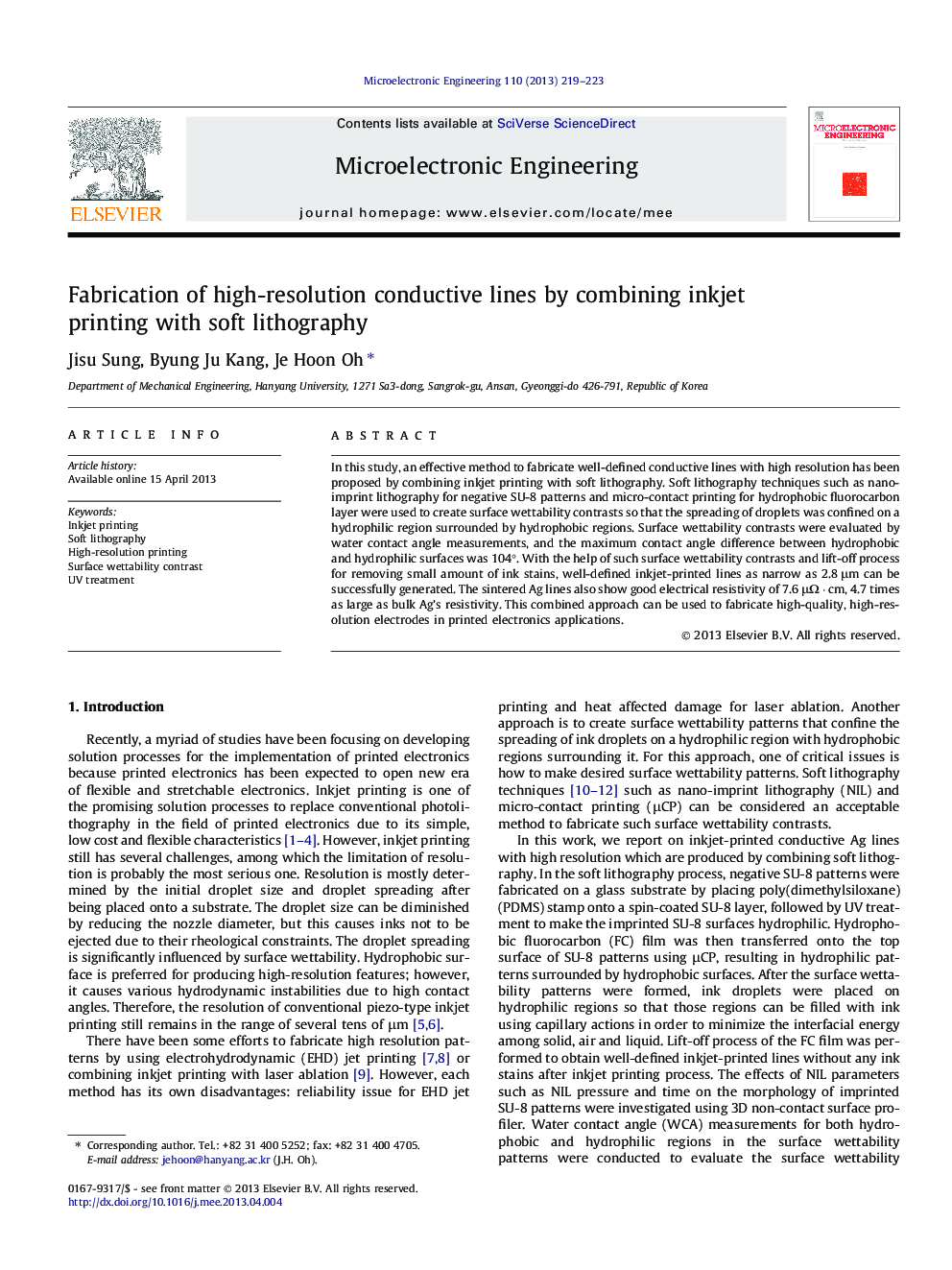| Article ID | Journal | Published Year | Pages | File Type |
|---|---|---|---|---|
| 544264 | Microelectronic Engineering | 2013 | 5 Pages |
•Inkjet-printed high-resolution lines are achieved by combining soft lithography.•Surface wettability contrast is produced using NIL, UV treatment and μCP.•Liquid droplets are filled well within pre-defined hydrophilic regions.•Well-defined Ag lines as narrow as 2.8 μm are inkjet-printed with a 30 μm nozzle.•Electrical resistivity of sintered Ag lines is as low as 7.6 μΩ · cm.
In this study, an effective method to fabricate well-defined conductive lines with high resolution has been proposed by combining inkjet printing with soft lithography. Soft lithography techniques such as nano-imprint lithography for negative SU-8 patterns and micro-contact printing for hydrophobic fluorocarbon layer were used to create surface wettability contrasts so that the spreading of droplets was confined on a hydrophilic region surrounded by hydrophobic regions. Surface wettability contrasts were evaluated by water contact angle measurements, and the maximum contact angle difference between hydrophobic and hydrophilic surfaces was 104°. With the help of such surface wettability contrasts and lift-off process for removing small amount of ink stains, well-defined inkjet-printed lines as narrow as 2.8 μm can be successfully generated. The sintered Ag lines also show good electrical resistivity of 7.6 μΩ · cm, 4.7 times as large as bulk Ag’s resistivity. This combined approach can be used to fabricate high-quality, high-resolution electrodes in printed electronics applications.
Graphical abstractFigure optionsDownload full-size imageDownload as PowerPoint slide
